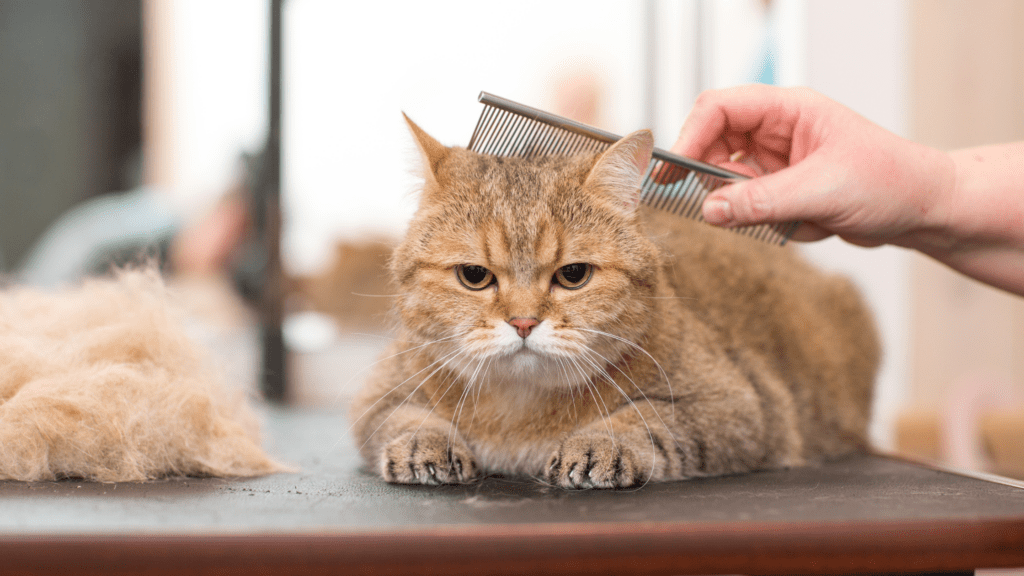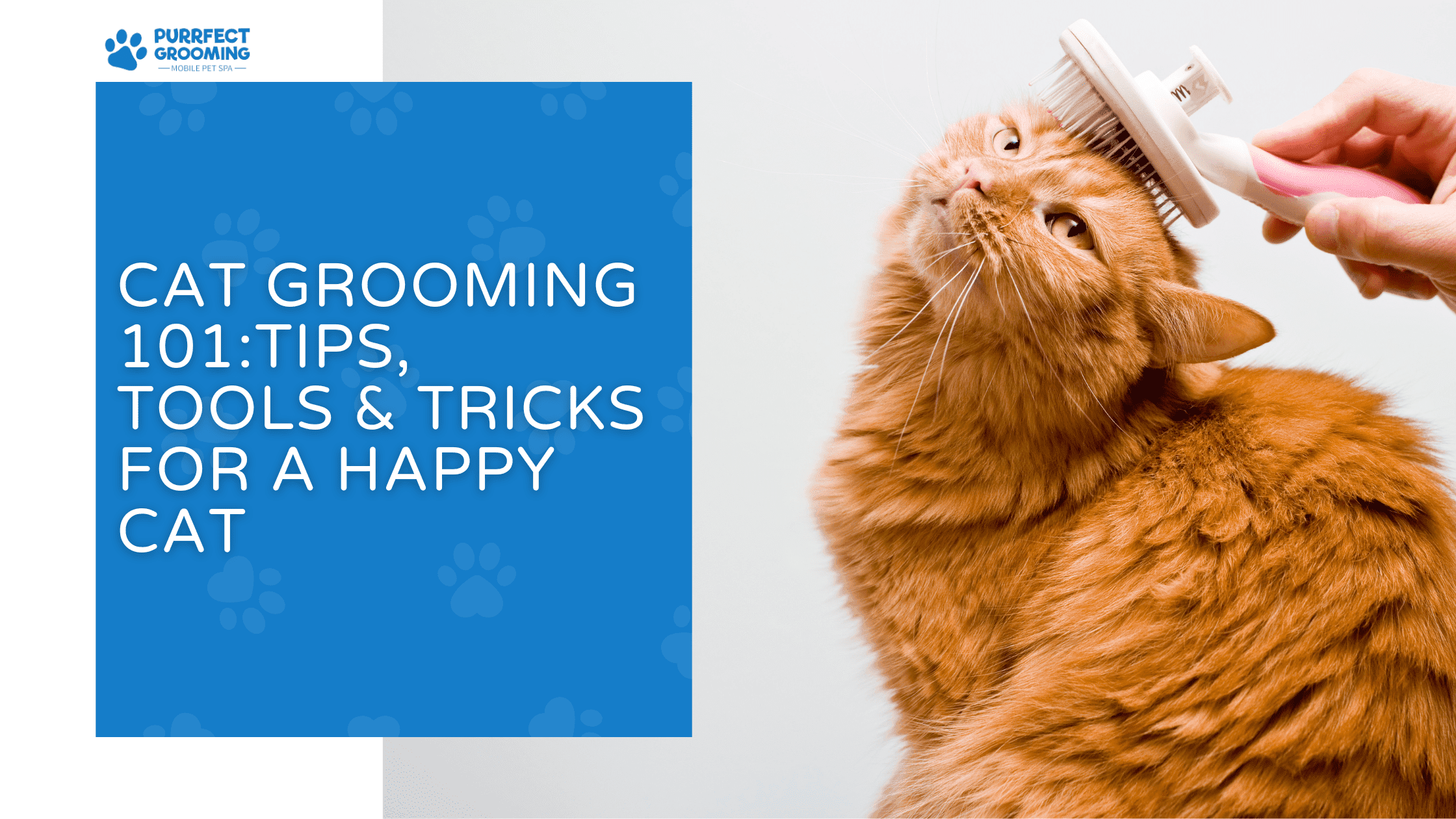Cat Grooming 101:Tips, Tools & Tricks for a Happy Cat
Many pet owners assume their feline friends don’t need human intervention, but proper grooming plays a crucial role in a cat’s overall health. Whether you have a short-haired domestic cat or a long-haired Persian, knowing how to groom a cat at home can enhance their well-being, keep their coat healthy, and reduce shedding in your home.
Did you know that cats spend nearly 50% of their waking hours grooming themselves? While cats are experts at self-grooming, regular maintenance from their owners is still necessary to prevent excessive shedding, hairballs, skin infections, and other hygiene issues.
In this detailed guide, we’ll explore essential cat grooming tips, the best tools to use, how to groom a cat safely, and common mistakes to avoid.
Why is Cat Grooming Important?
1. Prevents Matting and Tangles
Long-haired cats, such as Maine Coons and Persians, are prone to matting. Matted fur can cause pain, irritation, and even infections. Regular brushing prevents these issues.
2. Reduces Shedding and Hairballs
Cats naturally shed, but excessive loose hair can lead to hairballs, which can cause vomiting and digestive issues. Brushing removes dead hair before your cat ingests it.
3. Helps Detect Skin Issues Early
Regular grooming allows you to check for parasites, skin infections, or wounds before they become serious problems.
4. Promotes a Healthier Coat
Brushing stimulates the skin’s natural oils, resulting in a shinier, healthier coat.
5. Keeps Nails Trimmed and Paws Healthy
Untrimmed nails can grow too long, causing pain and difficulty walking. Regular nail trimming is essential for cat health and comfort.
How Often Should You Groom Your Cat?
The frequency of grooming depends on your cat’s coat type, age, and lifestyle.
| Cat Type | Brushing Frequency | Bathing Frequency |
| Short-haired cats | 1-2 times a week | Once every 4-6 months |
| Long-haired cats | Daily | Once every 1-2 months |
| Senior cats | 3-4 times a week | As needed |
| Overweight cats | 3-4 times a week | As needed |
Tip: If your cat spends time outdoors, they may require more frequent grooming to remove dirt and debris.
Essential Cat Grooming Tools
1. Brushes and Combs
- Slicker brushes – Best for long-haired cats to remove mats and tangles.
- Bristle brushes – Ideal for short-haired breeds to distribute natural oils.
- De-shedding tools – Reduce excessive shedding in all cat types.
2. Nail Clippers
- Guillotine-style clippers – Great for precise trimming.
- Scissor-style clippers – Easier to use for thick nails.
3. Cat-Safe Shampoo
- Always use mild, hypoallergenic shampoo designed for cats.
- Avoid human or dog shampoos, which may contain harsh chemicals that irritate cat skin.
4. Ear and Eye Cleaning Supplies
- Soft cotton pads for ear and eye cleaning.
- Veterinary-approved ear cleaning solution to prevent infections.
5. Dental Care Supplies
- Cat-specific toothbrushes and toothpaste help prevent gum disease.
- Dental treats can also help maintain good oral hygiene.

How to Groom a Cat at Home – A Step-by-Step Guide
1. Preparing Your Cat for Grooming
- Choose a calm and quiet environment.
- Use treats and gentle petting to make your cat feel relaxed.
- Start slowly—avoid rushing the process, especially if your cat is new to grooming.
2. Brushing Your Cat’s Fur
- Start with a soft brush to remove loose hair.
- Use a de-shedding tool if your cat sheds a lot.
- For long-haired cats, use a wide-toothed comb to prevent tangles.
- Always brush in the direction of hair growth to avoid discomfort.
3. Bathing a Cat Without Stress
- Most cats dislike water, so bathing should only be done when necessary.
- Use lukewarm water and pour it gently over your cat’s body.
- Apply cat-friendly shampoo and lather gently.
- Rinse thoroughly to remove all shampoo residue.
- Dry your cat using a soft towel and let them air-dry in a warm space.
Tip: Never use a hairdryer unless it’s set to the lowest setting and your cat is comfortable with it.
4. Cleaning Your Cat’s Ears
- Use a damp cotton pad to gently clean the outer ear.
- Avoid inserting anything deep into the ear canal.
5. Trimming Your Cat’s Nails
- Hold your cat’s paw gently and press the pad to extend the claws.
- Trim only the sharp tip to avoid cutting the quick (which contains nerves and blood vessels).
- If your cat resists, trim just one or two nails at a time and try again later.
Common Cat Grooming Mistakes to Avoid
1. Using Human Shampoo
Human shampoos contain harsh ingredients that can dry out a cat’s skin and cause irritation. Always use cat-specific products.
2. Skipping Regular Brushing
Neglecting to brush your cat can lead to matted fur, hairballs, and excessive shedding.
3. Cutting Nails Too Short
Cutting into the quick of the nail can cause pain and bleeding. Trim only the sharp tips.
4. Grooming When Your Cat is Anxious
Never force grooming on a scared or agitated cat. Instead, take breaks and use treats to create a positive experience.
Managing Shedding and Preventing Hairballs
- Regular brushing reduces shedding and prevents hairballs.
- Feed your cat a high-fiber diet to help pass hair naturally.
- Provide hairball control treats or add a small amount of pumpkin to their food.
Professional Cat Grooming: When to Seek Help
While most cats can be groomed at home, some situations require a professional groomer or vet:
- Severe matting that cannot be brushed out.
- Flea or tick infestations that need special treatment.
- Aggressive behavior during grooming.
- Skin infections or unusual lumps that require a vet’s attention.
Conclusion
Grooming is an essential part of keeping your cat healthy and happy. Regular brushing, occasional baths, nail trims, and ear cleanings can prevent common health issues and keep your home fur-free.
By following these step-by-step cat grooming tips, you can make the process easy and stress-free for both you and your feline companion.
Pro Tip:
For a shinier coat and fewer hairballs, add omega-3 fatty acids (found in fish oil) to your cat’s diet!
FAQs
1. How often should I groom my cat?
Short-haired cats need brushing 1-2 times a week, while long-haired breeds require daily grooming.
2. Can I use baby shampoo on my cat?
No, baby shampoo lacks the right pH balance for a cat’s skin and may cause irritation.
3. What is the best brush for long-haired cats?
A slicker brush helps prevent mats and removes tangles efficiently.
4. How do I stop my cat from scratching during grooming?
Use treats and gentle handling to keep them calm. If needed, groom them in short sessions.
5. How do I safely remove mats from my cat’s fur?
Use a dematting comb or seek professional help for severe cases.
